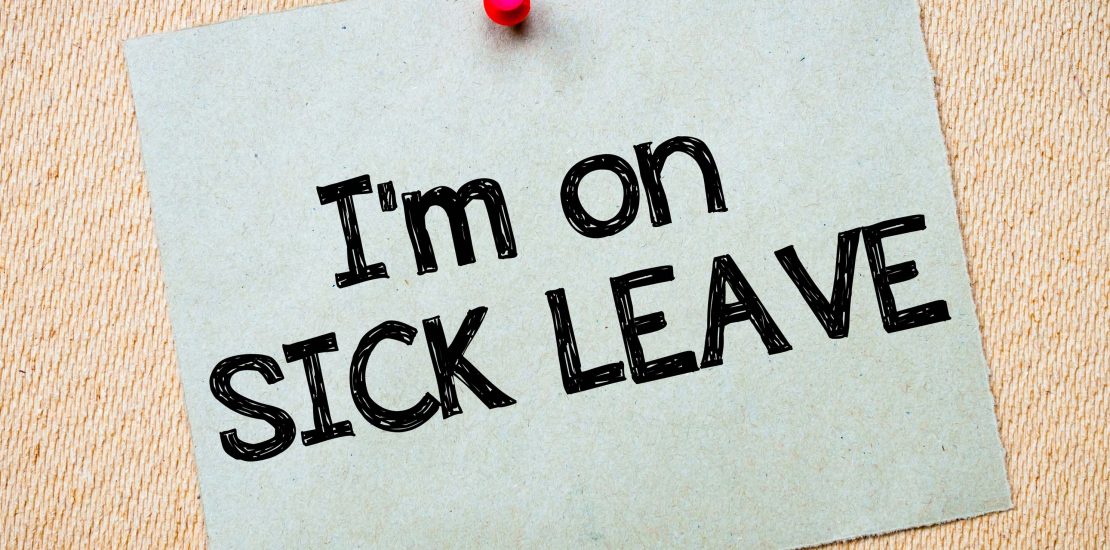Coronavirus Statutory Sick Pay rebate scheme is ready
- May 27, 2020
- Posted by: admin
- Category: Uncategorized

The portal for claiming under the SSP rebate scheme will open on 26 May. Ian Holloway sets out how you should prepare to submit claims on behalf of your clients.
We have been waiting for this rebate scheme to launch since these announcements were made in March 2020:
- On 3 March the Prime Minister said in the House of Commons that COVID-19 related SSP would payable from the first qualifying day rather than after three waiting days (a three day wait still applies for employees who are absent with illnesses not related to Covid-19).
- On 11 March Chancellor Rishi Sunak confirmed in his Budget 2020 that the reimbursement of SSP would only be for employers with fewer than 250 employees.
Guidance and legislation
We have been inundated with SSP legislation in recent months, mainly concerning eligibility for paying SSP where an individual is self-isolating or shielding.
On 19 May 2020, HMRC issued updated guidance letting us know that the reclaim scheme will be called the Coronavirus Statutory Sick Pay Rebate Scheme (CSSPRS). There are two more important pieces of legislation to refer to:
- The Statutory Sick Pay (Coronavirus) (Funding of Employers’ Liabilities) Regulations 2020
- The Statutory Sick Pay (Coronavirus) (Funding of Employers’ Liabilities) (Northern Ireland) Regulations 2020
These come into force on 26 May 2020, the same day as the SSP reclaims portal opens.
Who qualifies?
The guidance and the legislation advise that an employer has to be eligible in two regards:
- It must have fewer than 250 employees on 28 February 2020. This applies to all the PAYE schemes operated by the employer so we have to consider any connected employers, just as we do for the employment allowance
- The employer was not ‘in difficulty’ on 31 December 2019
The definition of ‘in difficulty’ for this purpose is found in various communications from the EU Commission on the guidelines on the agreed UK state aid support scheme for small and medium-sized enterprises (SMEs).
This reference to EU law relates to the fact that the CSSPRS is being operated under the temporary EU framework granting state aid to small and medium-sized employers. Importantly, the amount of state aid received under all such support schemes must not exceed the following limits for these trade sectors:
- €120,000 – aquaculture and fisheries
- €100,000 – agriculture
- €800,000 – anything else.
Pre-check
Regardless of who will be making the claim under the CSSPRS, you will need to ascertain whether the size criteria is met (fewer than 250 employees on 28 February 2020) and whether the business would be judged to be ‘in difficulty’ on 31 December 2019.
What periods can a claim cover?
An SSP rebate can be claimed by eligible employers for the first 14 days per employee in these circumstances:
- absence through COVID-19 related sickness or self-isolation starting on or after 13 March 2020
- absence through COVID-19 related shielding, following public health advice and where the employee is in receipt of a letter from the GP or the NHS, for periods starting on and after 16 April 2020.
How to claim
The online reclaims portal will open on 26 May 2020, just after the Bank Holiday weekend. Like the CJRS, the service will be accessed via a government gateway user ID. Tax agents will be able to make claims on behalf of their clients.
Information requirements
The updated guidance is clear that the following information will be needed:
- The employer PAYE scheme reference number
- A contact name and telephone phone number
- UK bank or building society account number, sort code, and name of the acount, for Bacs payments
- The total amount of COVID-19 SSP paid for the claim period
- The number of employees being claimed for
- The start date and end date of the claim period
Each claim can cover multiple employees, and there is no indication that each employee will have to be identified individually in the claim by saying their NI number.
Declarations
The updated HMRC guidance is less clear that the following declarations will need to be made (this is quoted in the legislation):
- A declaration that the employer was not in difficulty on 31 December 2019
- A declaration confirming the amount claimed will not result in the amount of state aid received making them exceed the allowable cap for their sector
- A declaration the information stated in the claim is true and accurate
Read the guidance
I would strongly urge employers and tax agents to read the HMRC guidance in full, as this is HMRC’s interpretation of the legislation. Employers are particularly advised to read the parts about:
- records to keep
- time limits for claiming
Note the danger of double claims, HMRC warns employers: ‘You can claim back from both the coronavirus job retention scheme and the coronavirus statutory sick pay rebate scheme for the same employee, but not for the same period of time for that employee.’
Plus, don’t forget two things:
- The SSP rate changed on 6 April 2020 (from £94.25 to £95.85 per week), therefore, claims may be at different rates.
- The 28-week maximum SSP rule has not changed. SSP cannot exceed 28 weeks in any period of incapacity for work (PIW) or series of linked PIWs. Check that SSP was payable in the first place and does not exceed the maximum number of weeks payable.
Written by Ian Holloway (Head of Legislation and Compliance Cintra HR & Payroll Service)
